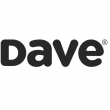Anti-HFT Aequitas Neo Exchange prepares for launch
A new exchange is planning to begin trading in March, with a platform focused on long-term investors and issuers. Chief executive Jos Schmitt says the new venue has some unusual features which should help keep unwanted high-frequency traders at bay.
Aequitas plans to launch a trading platform for equities in March, a listing platform for issuers in May and a market for private securities a few months later. In keeping with Schmitt’s history as former chief executive of alternative trading venue Alpha ATS, which had similar aims, the new platform aims to support retail investors and long-only businesses, segments of the market which he has long argued have been neglected and ignored by the conventional exchanges. The new venue aims to correct the unfair advantage thatsome observers believe HFTs have through their faster access to market data and faster trading technology, which allows them to profit at the expense of the long-only investor.
“We want to eliminate the asymmetrical access to information that HFTs have,” said Schmitt. “It’s quite easy to identify them. We will apply a speed bump on the HFTs when they take liquidity. We will apply normalisation to ensure that orders arrive at the same time, and this is done to prevent certain types of strategy that are used by aggressive predatory HFTs. To counter the layering strategies, HFTs will lose their priority. Even if they get in the queue ahead of an institutional investor, the long-term institutional investor will always get priority – there is no advantage to getting to the market first.”
Aequitas is currently waiting for final regulatory approval, which it expects before the end of the year. In the meantime, it has chosen MillenniumIT as its technology provider and has set up two data centres and a trading platform, which is now taking on customers for preparation and testing. MillenniumIT was chosen based on its ability to tailor the trading platform to Aequitas’ requirements.
Schmitt also has plans to bring back designated market makers and end the fickle speculation and profiteering of HFT predators, which he says are no substitute for genuine designated market makers because the HFTs abandon other market participants at the first sign of trouble. On Aequitas, market makers will get priority access to 15% of flow – a figure that Schmitt says is well below the 40% being offered on Nasdaq OMX, but which he says is designed to offer a better balance between liquidity providers and the rest of the market and to encourage responsible market behaviour and liquidity.
“A lot of people think that HFT is market making. I say no, I totally disagree,” he said. “A designated market maker has obligations. It’s nothing to do with being opportunistic. We want designated market makers to thrive and not to be crowded out by HFTs.”
Exchanges and alternative trading venues have frequently sought to attract HFTs over the last decade, as these traders are lucrative and offer the prospect of increasing trading volumes, which in turn drives up exchange fees and therefore profits. Critics argue that many of these venues have essentially sold out to HFT, investing in ever-faster trading platforms and ignoring warning signs such as reduced stability, crashes and complaints from long-term institutional investors that the HFT “vultures” are preying on their flows.
“The exchanges neglected the designated market maker because they thought you didn’t need that anymore, as HFT was supposed to be providing liquidity,” said Schmitt. “But the reality is that these HFTs disappear as soon as the market hits stress, they don’t cover the small stocks at all. They just focus on the blue chips – there is no liquidity in small and mid-cap names. These HFTs just hurt the market share of the designated market makers and many have disappeared as a result.”
Schmitt added that there is no real competition in Canadian trading or listing since the Maple acquisition of Alpha ATS and TMX in 2013, since all existing platforms cater to HFTs and there is no other significant listings business besides the Toronto Stock Exchange. In addition, he believes that retail investors and investment advisors are currently dangerously blind to the true state of the market in Canada, since the fees for market data are expensive and many customers only pay for access to the TSX, which accounts for just 57% of trading volume.
“It’s quite scary because they can only partially see what’s going on,” he said. “There are really three groups – investors, dealers and issuers. We want to give the market back to them. Aequitas is 50% owned by the buy-side and issuers, and that will ensure we always remember our mission and don’t just chase the low-hanging fruit like HFT and co-location customers.”












































